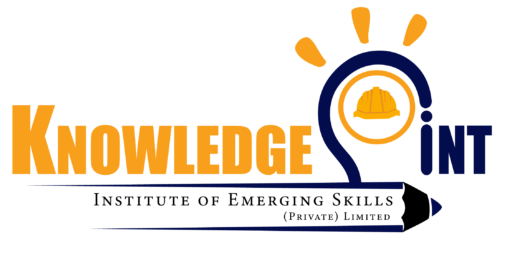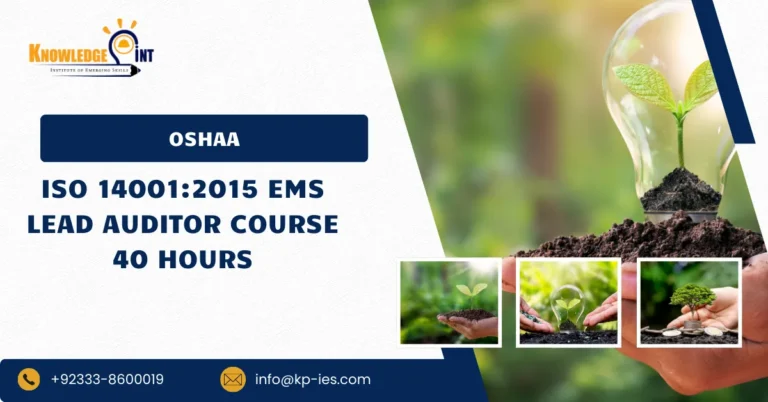In today’s fast-paced industrial environment, ensuring the safety and well-being of employees is paramount. The OSHA 48-Hour General Industry Safety and Health course is designed to equip workers and supervisors with essential knowledge and skills to recognize, evaluate, and mitigate workplace hazards. This comprehensive training program serves as an intermediate step between the basic 10-hour course and the more in-depth 132-hour course, providing a balanced approach to safety education.
The OSHA 48-Hour course is an intensive training program that covers a broad range of safety and health topics relevant to general industry. It is ideal for employees, supervisors, and safety professionals seeking to deepen their understanding of workplace safety without committing to the extensive 132-hour course. This program goes beyond the basics, offering detailed insights and practical applications to enhance workplace safety.
The OSHA 48-Hour General Industry Safety and Health course is a crucial step for anyone seeking to enhance their knowledge and skills in workplace safety. By covering a comprehensive range of topics and providing practical applications, this course helps create safer, healthier work environments. Investing in intermediate-level safety training like the OSHA 48-Hour course is not just about compliance—it’s about protecting the most valuable asset of any organization: its people.
Course Overview
The OSHA 48-Hour General Industry Safety and Health consists of 12 mandatory units which are as follows.
The learning outcomes of OSHA 48-Hour General Industry Safety and Health include:
Introduction to OSHA
- Understand OSHA’s Role and Mission: Comprehend the purpose and goals of OSHA in promoting workplace safety and health.
- Identify Key OSHA Regulations: Recognize the essential OSHA standards and regulations applicable to general industry.
- Understand Workers’ Rights and Employer Responsibilities: Learn about the protections for workers and the obligations of employers under OSHA.
General Safety and Health Provisions
- Understand Fundamental Safety Principles: Gain knowledge of the basic safety principles that apply across various industrial settings.
- Implement General Safety Measures: Learn to implement safety measures and procedures to prevent workplace accidents and injuries.
- Recognize Common Workplace Hazards: Identify and mitigate common hazards in the general industry environment.
Hazard Communication
- Understand the Hazard Communication Standard (HCS): Comprehend OSHA’s HCS requirements, including labeling, safety data sheets (SDS), and employee training.
- Identify Hazardous Chemicals: Recognize and categorize hazardous substances found in the workplace.
- Effectively Communicate Hazard Information: Learn to communicate hazard information to employees to ensure safe handling and use of chemicals.
Personal Protective Equipment (PPE)
- Identify Types of PPE: Understand the different types of PPE required for various tasks and environments.
- Proper Use and Maintenance of PPE: Learn the correct methods for using, maintaining, and storing PPE to ensure maximum protection.
- Assess PPE Needs: Evaluate workplace hazards to determine the appropriate PPE for specific tasks and situations.
Ergonomics
- Understand Ergonomic Principles: Learn the principles of ergonomics and their application in the workplace to reduce strain and injury.
- Identify Ergonomic Risk Factors: Recognize activities and conditions that can lead to musculoskeletal disorders.
- Implement Ergonomic Solutions: Apply ergonomic principles to design tasks and workspaces that fit the worker, improving comfort and efficiency.
Electrical Safety
- Understand Electrical Safety Basics: Comprehend the fundamental principles of electrical safety, including the dangers of electricity.
- Identify Electrical Hazards: Recognize common electrical hazards and learn methods to mitigate them.
- Implement Safe Electrical Practices: Apply safety measures and procedures to prevent electrical accidents and injuries.
Machine Guarding
- Identify Machine Hazards: Recognize hazards associated with the use of machinery and equipment.
- Implement Machine Guarding Techniques: Learn about different types of machine guards and safe operating procedures.
- Ensure Safe Operation of Machinery: Understand the procedures and protocols for operating machinery safely and preventing accidents.
Material Handling
- Understand Material Handling Principles: Learn the principles of safe material handling to prevent injuries and accidents.
- Identify Material Handling Hazards: Recognize hazards associated with material handling tasks, such as lifting, carrying, and transporting materials.
- Implement Safe Material Handling Practices: Apply safe practices for handling and storing materials to minimize risk.
Industrial Hygiene
- Understand Industrial Hygiene Concepts: Comprehend the principles of industrial hygiene and their application in the workplace.
- Identify Workplace Health Hazards: Recognize physical, chemical, biological, and ergonomic hazards that can affect worker health.
- Implement Control Measures: Learn to control and mitigate health hazards through effective industrial hygiene practices.
Workplace Violence Prevention
- Recognize Signs of Workplace Violence: Identify potential signs and risk factors of workplace violence.
- Develop Prevention Strategies: Learn strategies to prevent workplace violence, including policies, training, and environmental modifications.
- Implement Response Procedures: Understand the procedures for responding to and managing incidents of workplace violence.
Emergency Response
- Develop Emergency Response Plans: Create comprehensive emergency response plans for various scenarios, including fires, medical emergencies, and natural disasters.
- Implement Emergency Procedures: Learn the steps to take during an emergency, including evacuation, communication, and coordination with emergency services.
- Conduct Emergency Drills: Understand the importance of regular drills to ensure readiness and familiarity with emergency procedures.
Recordkeeping and Reporting
- Understand OSHA Recordkeeping Requirements: Learn the requirements for recording and reporting workplace injuries and illnesses.
- Maintain Accurate Safety Records: Develop skills for keeping accurate and up-to-date safety records.
- Analyze Safety Data: Use recorded data to identify trends, evaluate safety performance, and improve safety programs and policies.
Course Benefits of the OSHA 48-Hour General Industry Safety and Health :
1. Specialized Expertise
- Auditing Proficiency: Gain specialized knowledge and skills in auditing energy management systems according to the ISO 50001:2018 standard.
- Industry Recognition: Earn a globally recognized qualification that demonstrates your proficiency as an energy management systems auditor.
2. Career Advancement
- Expanded Career Opportunities: Qualify for roles such as Lead Energy Auditor, Energy Management Consultant, or Compliance Officer.
- Higher Earning Potential: Enhance your value to employers and increase your earning potential with specialized expertise in energy management auditing.
3. Industry-Relevant Skills
- Practical Application: Acquire practical skills and techniques for planning, conducting, and documenting energy management system audits.
- Effective Communication: Develop communication skills to interact with auditees, audit teams, and stakeholders effectively.
4. Contribution to Sustainability
- Promotion of Energy Efficiency: Play a key role in promoting energy efficiency and reducing environmental impact within organizations.
- Support for Sustainable Practices: Assist organizations in implementing and maintaining energy management systems that support sustainability goals.
5. Quality Assurance
- Compliance Assurance: Help organizations achieve compliance with ISO 50001:2018 requirements and other relevant regulatory standards.
- Risk Mitigation: Identify areas of non-conformance and provide recommendations for corrective actions to mitigate risks.
6. Continuous Professional Development
- Lifelong Learning: Engage in continuous professional development by staying updated with the latest developments and trends in energy management auditing.
- Networking Opportunities: Connect with industry professionals, auditors, and experts, expanding your professional network and opportunities.
7. Organizational Benefits
- Improved Performance: Contribute to the improvement of organizational energy performance through effective auditing and recommendations for continuous improvement.
- Enhanced Reputation: Help organizations build a positive reputation for their commitment to energy management and sustainability practices.
8. Personal Growth
- Leadership Development: Develop leadership skills to effectively manage audit teams, delegate tasks, and ensure audit objectives are met.
- Confidence Boost: Gain confidence in your abilities as an energy management systems auditor through practical training and hands-on experience.
As workplace environments evolve and new challenges emerge, the OSHA 48-Hour General Industry Safety and Health course must continue to advance to meet the dynamic needs of industries and workers. Here are potential future advancements and enhancements for this essential safety training program:
1. Integration of Advanced Technologies
- Virtual Reality (VR) and Augmented Reality (AR) Training: Incorporating VR and AR simulations to provide immersive, hands-on training experiences. These technologies can simulate hazardous scenarios and allow participants to practice safety protocols in a realistic, risk-free environment.
- Interactive E-Learning Modules: Enhancing online learning with interactive modules that include gamification elements, simulations, and scenario-based exercises. This approach increases engagement and retention of safety concepts.
2. Enhanced Focus on Psychological Health and Well-being
- Workplace Mental Health Awareness: Introducing modules focused on recognizing and addressing mental health issues in the workplace. This includes stress management techniques, resilience training, and promoting a supportive work environment.
- Conflict Resolution and De-escalation Techniques: Providing training on conflict resolution strategies and de-escalation techniques to prevent workplace violence and promote a culture of respect and collaboration.
3. Advanced Safety Management Systems (SMS)
- Data-Driven Safety Practices: Utilizing data analytics and predictive modeling to identify potential hazards and proactively mitigate risks. This includes real-time monitoring of safety metrics and automated reporting systems.
- Integration of Internet of Things (IoT): Implementing IoT devices and sensors to monitor environmental conditions, equipment performance, and worker health in real-time. This enables early detection of hazards and prompt corrective actions.
4. Global Safety Standards and Cultural Competence
- International Safety Regulations: Incorporating modules on global safety standards and regulations to prepare workers for multinational operations and compliance with diverse regulatory requirements.
- Cross-Cultural Safety Training: Providing cultural competence training to understand and respect safety practices across different cultural contexts. This promotes effective communication and collaboration in global workplaces.
5. Environmental Sustainability Practices
- Green Workplace Initiatives: Integrating modules on environmental sustainability practices and initiatives within the general industry. This includes waste reduction, energy efficiency, and promoting eco-friendly workplace behaviors.
- Climate Change Adaptation: Addressing safety challenges posed by climate change and extreme weather events. This includes emergency preparedness plans that consider environmental impacts and resilience strategies.
6. Enhanced Leadership and Employee Engagement
- Safety Leadership Development: Offering advanced training for safety leaders and supervisors to foster a strong safety culture. This includes leadership skills development, coaching techniques, and promoting accountability.
- Employee Engagement Programs: Implementing initiatives to involve employees in safety improvement efforts. This includes safety committees, peer-to-peer mentoring, and recognition programs for safety achievements.
7. Continuous Curriculum Updates
- Dynamic Content Revisions: Regularly updating course content to reflect the latest OSHA regulations, industry best practices, and emerging safety trends. This ensures the training remains relevant and up-to-date with evolving workplace hazards.
- Flexible Learning Pathways: Offering flexible learning pathways and elective modules to allow participants to tailor their training based on job roles, industry sectors, and specific safety challenges.
8. Collaborative Industry Partnerships
- Industry Collaboration: Partnering with industry associations, organizations, and subject matter experts to co-develop specialized training modules and share best practices. This fosters knowledge exchange and enhances the effectiveness of the training program.
9. Expanded Practical Training Opportunities
- Hands-On Workshops and Simulations: Increasing opportunities for hands-on workshops, drills, and simulations to reinforce safety skills and emergency response preparedness. This includes scenario-based training exercises to simulate real-life workplace situations.
10. Emphasis on Continuous Improvement and Evaluation
- Feedback Mechanisms: Implementing feedback mechanisms and participant evaluations to continuously improve the course content, delivery methods, and overall learning experience.
- Performance Metrics: Establishing performance metrics and benchmarks to measure the effectiveness of the training program in reducing incidents, improving safety culture, and achieving organizational safety goals.
The future progression of the OSHA 48-Hour General Industry Safety and Health course aims to embrace technological advancements, enhance psychological well-being support, integrate global and environmental considerations, and foster stronger leadership and employee engagement. By staying agile and responsive to industry changes and emerging risks, this course will continue to play a pivotal role in equipping workers with the knowledge and skills necessary to create safer and healthier workplaces across diverse industries.







